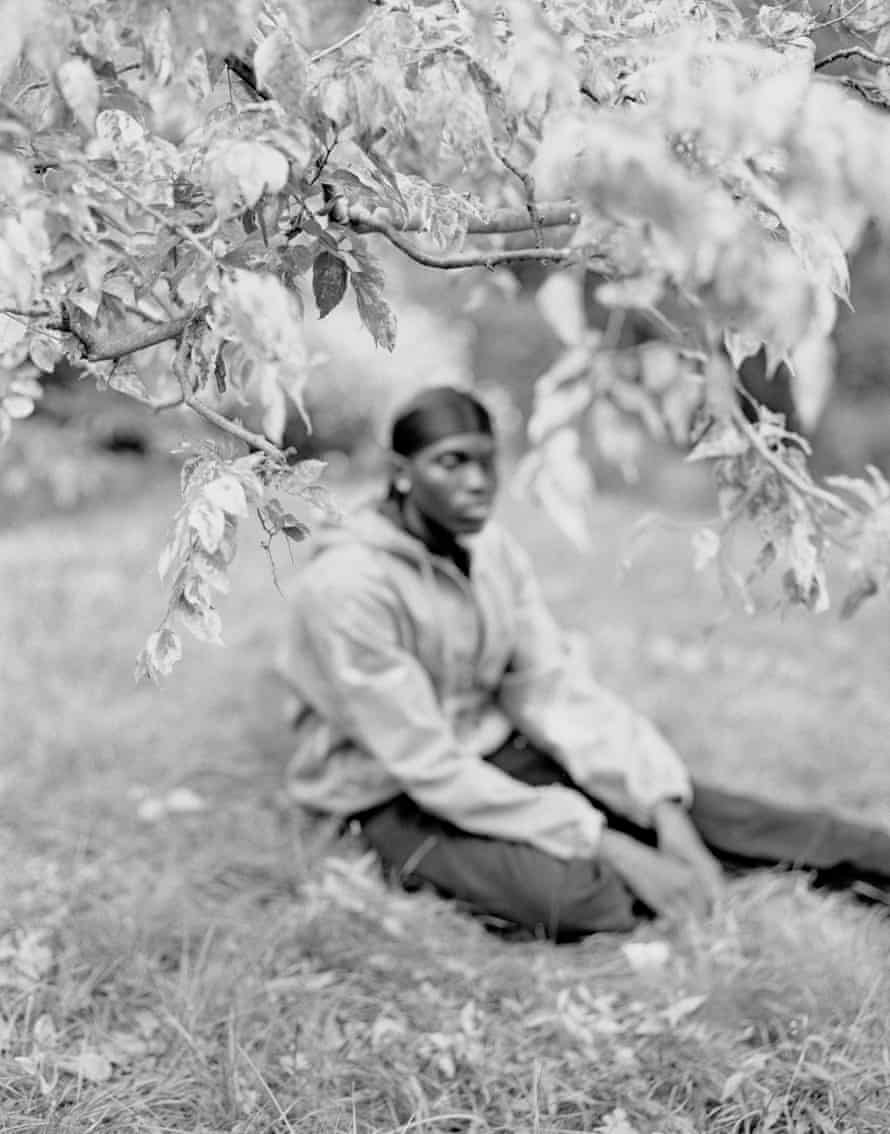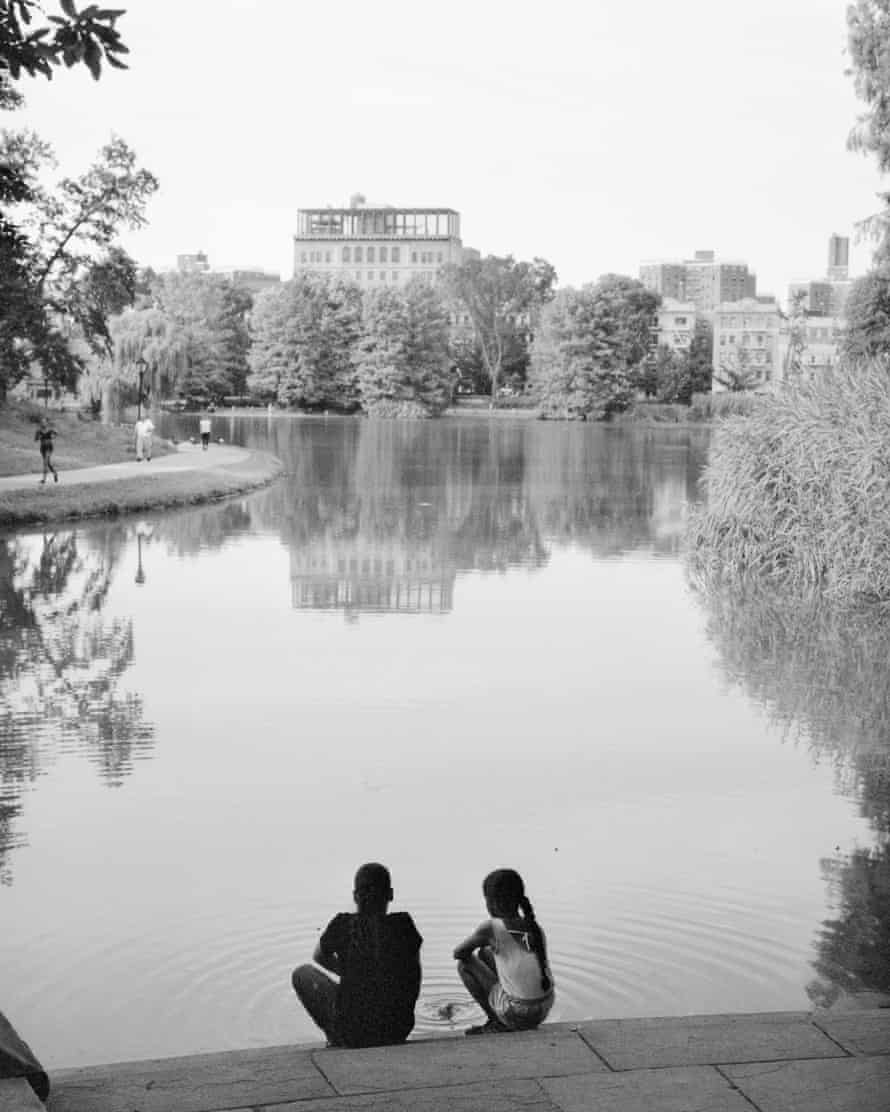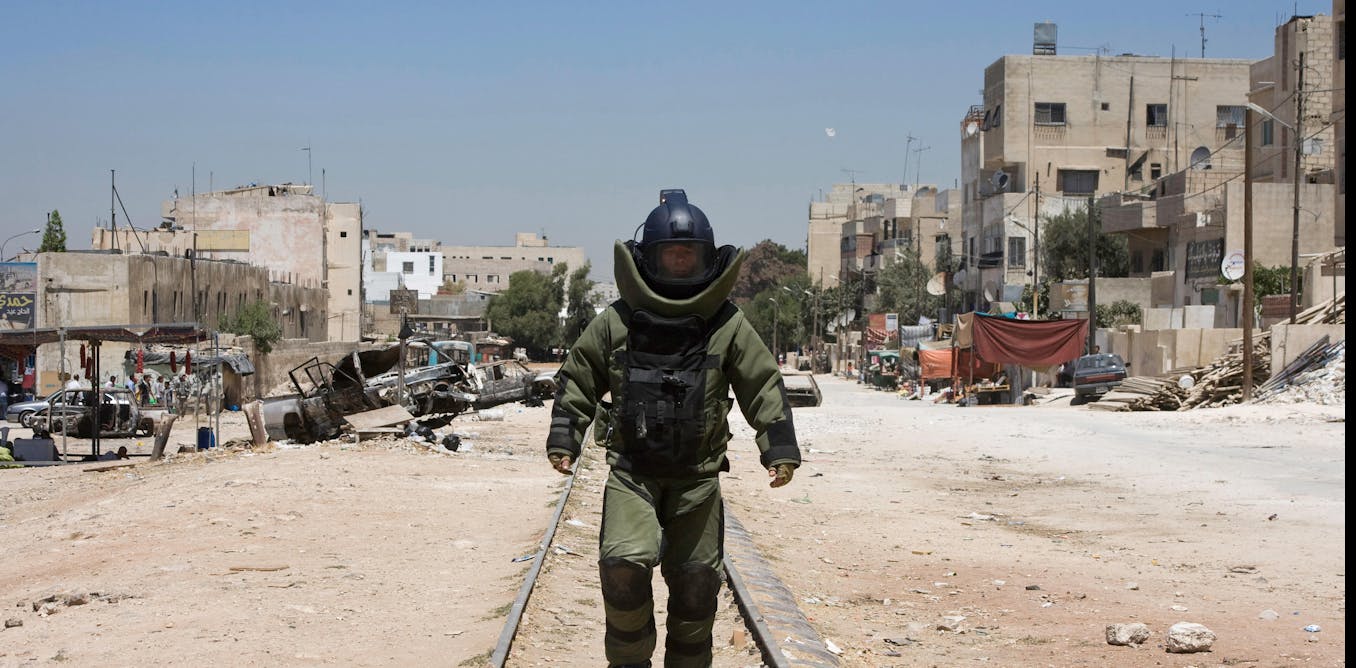Photographer Donavon Smallwood: ‘What’s it like to be a black man or woman in nature?’ | Photography
6 min read
Since he was seven yrs old, Donavon Smallwood experienced lived in the very same apartment in Harlem near to the northern tip of Central Park. As a teenager, he hung out there with his mates and, later on, as he grew to become interested in images, he would usually wander through the park with his digital camera on the lookout for concealed sites in which the clamour of the town seemed a earth away. “So numerous city communities don’t have any character areas,” he says, “so I was blessed to have a person shut by.”
In 2019, he experienced “a vague thought for a undertaking about going for walks and looking”, a flaneur’s get on the park as a area in which to reduce oneself. Throughout the spring and summer months of 2020, even though New York was in lockdown, he photographed in and all over the wooded north-western corner of the park, the place ravines, glades and manmade waterfalls give the perception of a natural wilderness. Normally, on his way there and again, he encountered the exact people today, locals largely, for whom the park was a place to escape the constrictions of the Covid pandemic.
“I didn’t know any of them,” he states, “but I started inquiring them if we could fulfill so I could photograph them just staying on their own, stress-free in character. Most men and women agreed to do it and, when we discovered a locale, I’d check with them to sit obviously for about five or 10 minutes. The temper I was soon after came quite effortlessly.”
That temper gave his job its evocative title: Languor. The collection contains landscapes that intensify the beauty and stillness of the park’s secluded sites and what Smallwood phone calls “candid and instructed portraits of black people today at simplicity in nature”. Shot in black and white and printed by Smallwood himself to accentuate the texture of hair and skin as properly as tree and leaf, these tranquil but powerful photographs gained him the 2021 Aperture Portfolio prize last thirty day period. A photobook of the identical title, published by Trespasser textbooks, will abide by soon.
“It’s all been a little bit stunning,” states Smallwood, who is 27 and self-taught apart from a single class on images in substantial university. “When I search back, I can see that my individual mood displays what I see and what I make. When I began photographing in the park, I’d go out and stroll all-around for as extended as I could, but I was often very comfortable about it. Often, I’d maybe even get a nap. In my personal way, I was seeking a course of action and it arrived out of me performing it.”
Central Park has always been a magnet for photographers, who have tended to coach their eye on the parade of regional people today that tends to make it such a vivid microcosm of New York lifetime in all its variety and frequently extravagant lack of self-consciousness. In the early 1990s, Bruce Davidson famously put in time there for his photobook, Central Park, while Tod Papageorge chronicled its reveries and encounters around several decades for his traditional Passing By means of Eden. In March of this 12 months, Irina Rozovsky revealed In Simple Air, a luminous evocation of Central Park’s lazy, laid-again summertime ambiance, which shares one thing of Smallwood’s languorous temper.
Languor, even though, is distinct, not only in what Aperture aptly identified as its “envisioning of black tranquillity”, but because Smallwood has rendered the area practically unrecognisable. His leafy glades, streams and dappled shades evince a sense of serenity, so significantly so that, if you came to these illustrations or photos without prior know-how, you’d be tricky pressed to detect their place. “Languor is not seriously about Central Park,” Smallwood says. “Its subject matter is what it’s like to be a black human being in nature.”
As these, it deftly subverts the received graphic of Central Park as an ecosystem that black persons have generally experienced to negotiate fairly than simply just be in. The park’s heritage is punctuated by incidents that echo the racial tensions of the city that surrounds it. In 1989, for occasion, a group of young black and Hispanic young people who became known as the Central Park Five were wrongly convicted of the brutal rape of Trisha Meili, a white jogger, a situation steeped in controversy and racial stereotyping. Far more lately, in May of previous yr, Amy Cooper, a white female, called the police on Christian Cooper (no relation), a black person who, while birdwatching in a wooded space of the park, had asked her to put her pet on a leash as essential by park guidelines. He filmed portion of her frantic reply: “I’m taking a picture and contacting the cops. I’m going to explain to them there’s an African-American male threatening my lifestyle.” Their face went viral within just several hours of it getting posted on line.
Though also staying a nature house, then, Central Park is also inevitably an extension of the metropolis, its normally fraught racial dynamic and its historical past. “I grew up in New York, so I was always knowledgeable of the tensions,” claims Smallwood, “and, since I shell out so much time in the park, I essentially know where by the Amy Cooper incident took position. It is a acquainted put to me.”

Researching the park’s record, Smallwood transpired upon a limited on the web documentary, The Dropped Neighbourhood Beneath New York’s Central Park. It tells the intriguing tale of Seneca Village, a 19th-century African-American community, which existed for many decades in the rural outskirts of Manhattan, before it was demolished to make way for the park.
“New York has so significantly hidden record that we just really do not understand about,” he says, “but this was near to residence. It just moved me so a great deal. In the 19th century, the higher areas of what is now Central Park have been generally grasslands and the folks who obtained land and designed a group there ended up escaping the overcrowdedness and the racism of Manhattan. They developed a several hundred residences exactly where they could exist in relative peace. There is even some speculation that it was connected to the Underground Railroad [the network of secret routes created to help slaves escape into free states]. Then, abruptly, it was torn down. It was unusual for me to find out that portion of the position I know and appreciate and invest so a lot time in was designed over what once was a black community.”

The documentary also prompted him to interrogate his have concept of mother nature. “At the identical time I observed the film I was examining William Blake a whole lot. To Blake, character was chaos. Humanity was the taming of character, creating gardens, households, communities. By undertaking that, you are primarily generating what humanity is. I assumed about that a lot, how the Seneca Village neighborhood was, in effect, the reverse of that: humanity becoming misplaced to mother nature.”
Smallwood’s photographs, even though educated by his eclectic looking through and research, existing mother nature and humanity present in a type of blissful, Eden-like harmony. In Languor, as befits its title, Central Park is rendered as a modern supply of tranquility, even sanctuary, for black persons escaping the clamour of the town, the constrictions of the lockdown and the relentless political turbulence of an The us riven by racial tensions. In Smallwood’s poised, personal portraits, his subjects appear at a single with nature and with by themselves. It is only in the ultimate impression, in which distant structures increase over trees and water, that the spell is damaged and the town tends to make its looming presence felt.





